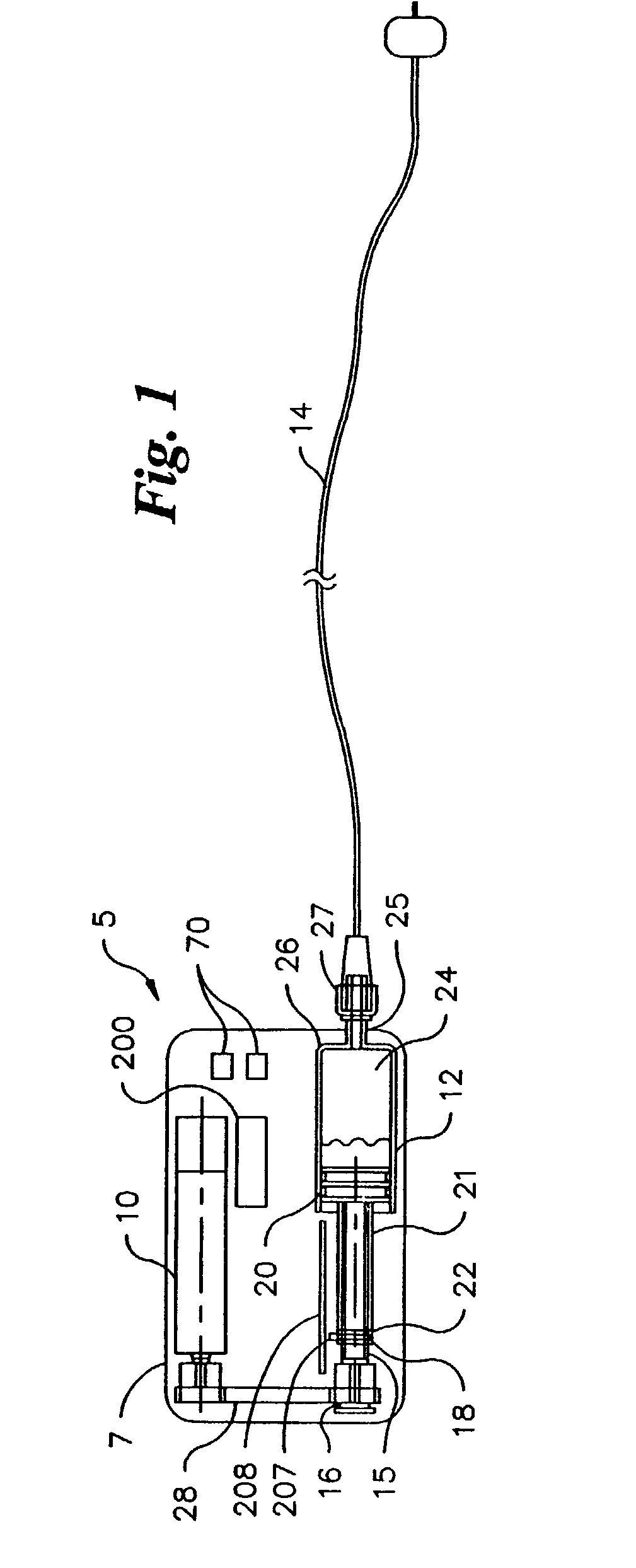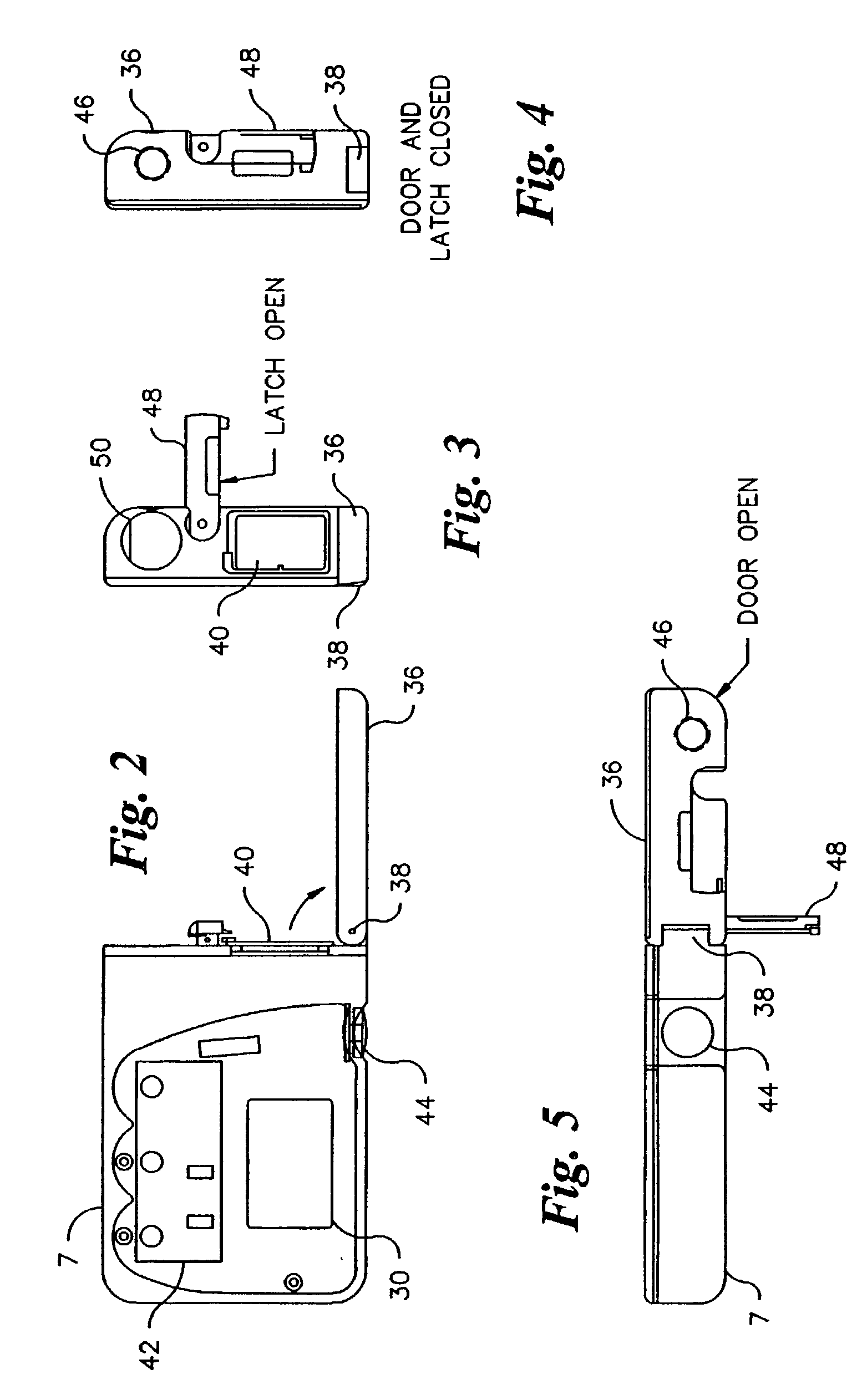Infusion pump with a sealed drive mechanism and improved method of occlusion detection
a drive mechanism and drive mechanism technology, applied in the field of infusion pumps, can solve the problems of screw threads either wear-down, degrade the reliability of the device, and inability to detect occlusion in the infusion path, so as to minimize the likelihood of user error or abuse and improve the accuracy
- Summary
- Abstract
- Description
- Claims
- Application Information
AI Technical Summary
Benefits of technology
Problems solved by technology
Method used
Image
Examples
Embodiment Construction
[0031] Certain terminology is used in the following description for convenience only and is not limiting. The words "right," "left," "lower" and "upper" designate directions in the drawings to which reference is made. The words "inwardly" and "outwardly" refer to directions toward and away from, respectively, the geometric center of the infusion pump and designated parts thereof. The terminology includes the words specifically mentioned above, derivatives thereof and words of similar import.
[0032] The term "Bolus" as used herein refers to a dosage of medication which is large with respect to typical dosage levels. For example, when infusing insulin to a patient over a period of time, a bolus is typically delivered to a patient before or during a meal to compensate for the increased amount of insulin required to balance glucose produced by food, or when the blood glucose is high. "Basal" as used herein refers to the essential dosage of medication which must be delivered to a patient ...
PUM
 Login to View More
Login to View More Abstract
Description
Claims
Application Information
 Login to View More
Login to View More - R&D
- Intellectual Property
- Life Sciences
- Materials
- Tech Scout
- Unparalleled Data Quality
- Higher Quality Content
- 60% Fewer Hallucinations
Browse by: Latest US Patents, China's latest patents, Technical Efficacy Thesaurus, Application Domain, Technology Topic, Popular Technical Reports.
© 2025 PatSnap. All rights reserved.Legal|Privacy policy|Modern Slavery Act Transparency Statement|Sitemap|About US| Contact US: help@patsnap.com



